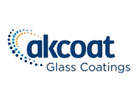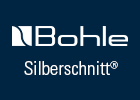Glass exhibits outstanding properties as food and beverage, pharma, perfumery and cosmetics packaging material:
• it is virtually inert: no substance will be transferred from glass to the product it contains •
it preserves the original properties of the product packed in it (being organoleptic, olfactory, medical, etc.)
• it is impermeable to gases, water, leakage of chemicals
• it is premium and aesthetic and adds significant value in terms of functionalities, value added and convenience to products
On top of those benefits, glass has an additional advantage when it comes to recycling, namely it is a permanent material . This means that glass has the potential to be recycled over and over again, without any loss of its main intrinsic properties. Permanent materials are perfect to maintain a true circular material loop. Due to the strength of their chemical bonds, permanent materials are indeed not damaged by the recycling process and can stay in the recycling loop as long as they are properly collected, treated and re-melted.
Today 76% of all container glass put on the market in Europe is collected for recycling. FEVE, the European Container Glass Federation, and FERVER, the European Federation of Glass Recyclers, are Founding members of Close the Glass Loop, a multi-stakeholder Partnership bringing together the glass packaging value chain to achieve a 90% average EU collection rate of used glass packaging by 2030 and improve the quality of collected glass so that more recycled content can be used in a new production loop.
Recycled glass is the most important raw material that is used to produce new glass packaging solutions. On average a glass container made in Europe contains 52% recycled glass.
Technically, glass bottles can be produced with up to 100% recycled glass and be endlessly and easily recycled into new glass packaging applications without any degradation of its quality. Glass packaging manufacturers and recyclers are committed to make our Circular Economy work better by ensuring that resources used are kept productive in the EU economy for as long as possible. They are therefore keen to increase the uptake of recycled glass and this paper sets out a joint FEVE/FERVER position on Recycled Content.
FEVE and FERVER consider that the recycling rate is a better indicator than the recycled content to measure the circularity of glass containers: the increase of the average recycled content is directly linked to optimised separate collection and sorting maximising the availability of more, better-quality, and colour-separated cullet that can be used for bottle-to-bottle recycling on the European market. While the “recycling rate” and the “recycled content” are related, they are however two different concepts.
• The recycling rate is a measure of the proportion of glass packaging put on the market in a specific geographical area by fillers and importers which, after consumer use, is collected and recycled. The Packaging and Packaging Waste Directive sets a recycling target for glass packaging of 75% by 2030
. • The recycled content is a measure of the proportion of recycled material contained in a specific product. A definition is given in the ISO 14021:2016 “Environmental labels and declarations — Self-declared environmental claims (Type II environmental labelling)”. It includes pre-consumer material and post-consumer material but excludes recycled glass generated in the glass process and capable of being reclaimed within this process. The recycled content is of course product dependent. The average recycled content of glass containers in the EU was assessed during the last FEVE Life Cycle Assessment in 2012 and reached 52%. The difference between the recycling rate and the recycled content can be explained by different factors:
• A difference in scope: the recycling rate is linked with the efficiency of the collection system in the Member states (which is the ratio between the quantities collected for recycling and the quantities put on the market), while the recycled content is linked with the quantity of recycled glass put in the glass furnaces. • The balance between imports and exports of empty and filled bottles is influencing the amount of recycled glass available to be recycled in the EU.
• In general, the recycling rate is currently measured at the entrance of the glass recycling plant (in fact what is collected) which is composed of other packaging materials (loose contaminants like plastic bottles or plastic bags as well as metal caps and paper / plastic labels on the bottles) in addition to food residues and water which need to be removed during the recycling step. • Some glass containers collected for recycling are in fact recycled in industries other than the container glass(e.g. insulation wool, cellular glass, road filling, etc.). They are therefore included in the recycling rate, not in the recycled content of glass containers.
• Conversely, some flat glass collected after the end-of-life of cars or buildings is recycled into glass containers. This glass is accounted for in the recycled content but not in the recycling rate.
• Sometimes, pre-consumer recycled glass (i.e. glass from breakages from a filling line or a decoration process) is not captured by the recycling rate but is included in the recycled content.
• Some non-glass materials (like calumite from the steel industry) can be recycled in a glass furnace. They are not included in the glass recycling rate, but well in the recycled content (this represents however a very small fraction, typically 0.5% at EU level)
To ensure a level playing field, reporting on recycled content for any packaging materials should be in line with the existing ISO Standard 14021:2016 Environmental labels and declarations – Self-declared environmental claims. To unambiguously define the recycled content of glass containers, the container glass industry developed, on the basis of the ISO Standard, recommendations on how to calculate the Recycled Content of glass containers and the Post-Consumer Recycled content (PCR) of glass containers.
2. Using recycled glass brings major environmental benefits – Innovating for the future
In the production of container glass, 20% of the CO2 emissions come from virgin raw materials. These emissions can be eliminated if virgin resources are replaced with recycled glass. Each time 1 tonne of glass is recycled in a glass furnace:
• it avoids the extraction of 1.2 tonnes of virgin raw materials
• it reduces the CO2 emissions by 580 kg on a Life Cycle basis2 (on average, a 10% increase of cullet in the furnace decreases CO2 emissions by 5%)
• it reduces the energy consumption of the furnace (as a rule-of-thumb for large furnaces, every 10% increase of cullet will reduce the energy consumption of the furnace by ~2.5% but this can vary depending on furnace size)
The container glass industry has initiated a major revolution to produce glass that is fit for a circular and climate-neutral economy. The use of renewable electricity in container glass production can, in theory, completely reduce the CO2 emissions from the combustion in the furnace, but this technology is currently limited to small-scale furnaces for flint (clear) glass with limited recycled glass content. Furnaces in Europe must develop new technologies to melt glass with electricity but in such a way as to ensure that most of the batch will be recycled glass. With Furnace for the Future, the container glass industry plans to pioneer innovative electric melting on a commercial scale. Furnace for the Future will be the world’s first large-scale hybrid furnace to run on 80% renewable electricity and will cut CO2 emissions by 50%. It will produce up to 350 tonnes of glass per day and will be capable of melting amber glass together with high levels of recycled glass.
3. Increasing the uptake of Recycled content – the way forward
Setting a recycled content target is not a solution to actually increase recycled content in glass packaging. Introducing policy targets on recycled content has been conceived as a market driver for materials which today are not effectively recycled due to technical and market limitations directly linked to their inherent properties. This approach is not effective for fully recyclable materials such as glass for which the increase of the average recycled content is directly linked to the availability of more, 2 Based on a FEVE LCA study from December 2016 3 See page 314 of Glass BREF better-quality recycled glass. To ensure high-quality recycling, and ultimately higher recycled content, mono-material separate collection and sorting of glass needs:
• To be in place across Europe
• To be optimised to provide the best glass quality.
FEVE and FERVER are committed to work together within Close the Glass Loop to develop tools and measures to increase the quantity and quality of collected glass to favour bottle-to-bottle production. In this context, we are exploring to what extent “fines”, very tiny fragments generated during the collection and Cullet Treatment processes, could be worked on and recycled in a glass furnace with a view to further increasing the amount of recycled content in glass packaging and diverting this fragment from less open loop recovery outlets (e.g. construction materials, backfilling) or even from landfilling.


























